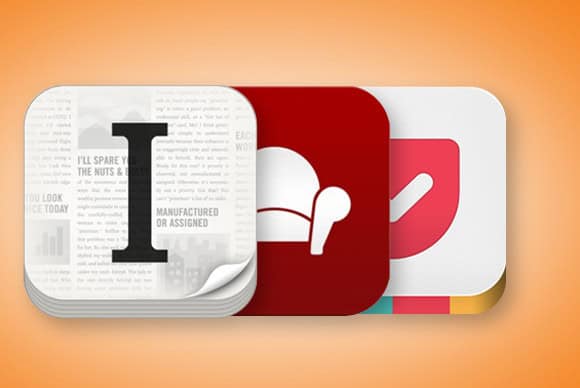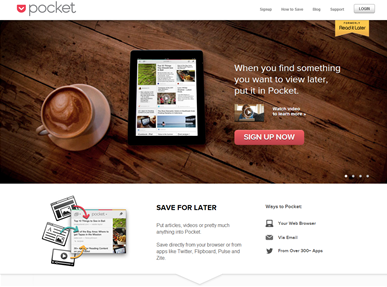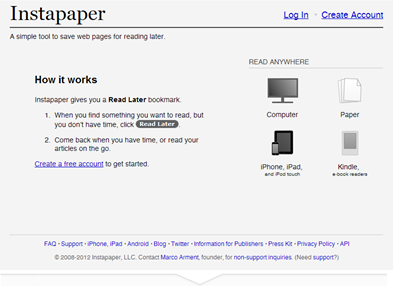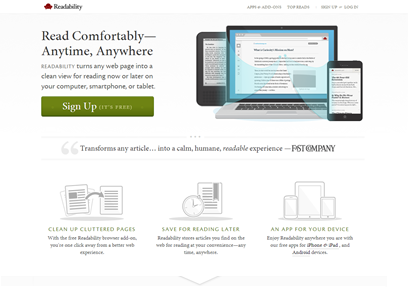I began writing this blog post as a review of read later apps like Pocket, Instapaper, Readability and Evernote Clearly, but as I wrote, I realised that the impact of these applications isn’t just huge for advertisers, it’s huge for Search Engine Optimisers (SEOs).
For those of you who have never used a read later application, these tools do exactly as the name implies – they allow users to save page content for later consumption – either online or offline – on computers, ebook readers, tablets and smartphones.
The thing that really gives these apps the ‘something more’ factor and what makes them so appealing is that they strip everything except the main body content from the page. That means: no advertisements, no navigation, and no call-to-actions.
It’s this ‘stripping’ that means advertisers are going to have to find a new way to market their products or to get people to come back to the website. As for business owners, they’re going to have to rethink how they will measure a user’s engagement with a particular webpage, given that bounce rate and ‘time spent on page’ aren’t going to mean anything for too much longer.
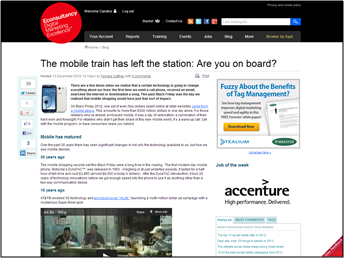
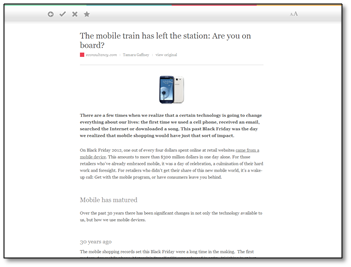
What’s especially great about read later apps like Pocket is that they save the embedded videos as well. And, if you have the Pocket app on your smartphone or tablet, you can even read the articles offline.
It’s a great concept for those of us who simply don’t get the time at work to read all the interesting things we come across, and a great idea for those of us who seriously have problems concentrating on reading an article because of all the other distractions on the page.
Are Read Later apps worth the hype?
Yes.
Take a service like Pocket (formerly known as Read it Later). As of April 2012, Pocket boasted 4.5 million users. If you think that’s a big number consider this: on average there are 350, 000 daily saves to Pocket and over 10.5 million saves every month. That means 10.5 million articles that have had advertising stripped, call-to-actions taken out, context peeled away. For advertisers and for online business owners, this isn’t great. It means that there are no links back to the website’s service pages or even to a homepage, there’s no newsletter sign up, no contact form, no free ebook download. Nothing except cold, hard content.
The page stripping that these apps do also means that the time spent reading saved pages has not been tracked. As any online website or online business owner will know, web analytics tools (like Google analytics) are continually referred to in order to measure a website’s success. What impact this will have on search engine optimisation (SEO) is also unknown at present. If you’ve got any opinions on how it will affect SEO, I’d love to hear them – get in touch with me on Twitter @XanthosDigital or leave a comment.
What are the implications of ‘Read Later’ tools?
There are a few:
- Analytics will have to change, or at the very least, the way we measure a website’s ‘success’ will have to change.
- Social sharing will become a more important metric in analytics tools as it will offer a way to measure someone’s approval/appreciation of an article.
- Content will need to change as well – call to actions will have to be incorporated into the actual copy on a page and so will advertisements (though I really hope this never happens).
- If online business owners, bloggers and news sites want to keep people on their website, they’re going to have to get even better at embedding useful information that can NOT be saved to read later apps for later viewing.
A few of the main read later tools worth looking into include:
- Pocket (formerly known as Read it Later)
- Instapaper
- Readability
What should you be doing to work WITH Read Later tools?
More than ever before, you should make sure that your content is worth reading. It’s the same thing that Rand Fishkin, the CEO of SEOmoz, is always preaching – useful, engaging content is the only real ticket to a great rank in the search result pages. It may take a bit of time for your content to get picked up, read and distributed but, if you put in a little bit of marketing work – do some social bookmarking, social sharing, etc – you’ll find that your long-term SEO strategy is much stronger than the strategies that focus solely on keyword optimisation and short-term, spammy link building techniques.
It’s time to make way for the new kid in town – Call-to-Action Content
CTA Content is:
- Content embedded within a stream of other useful and up-to-date news. Great content surrounding your content makes your content look good. Plus, it provides the incentive to get your readers to return to the website to save some more of your fantastic work for later reading.
- Engaging. Readers love being drawn in by a good introduction and being left with though-provoking questions/ideas.
- Relevant to your website and your industry.
- Original. Don’t just repeat what everyone else says. Think it through and put your own spin on it.
- Give credit where it’s due. If it’s not your idea, don’t pretend it is. Anyway, if you give credit, you can tweet your article at whomever you’ve mentioned.
- Error-free. Grammar and spelling count. They always will. Don’t give your reader an excuse to stop reading.
To Conclude:
- Try the Read Later tools
- Get better at writing really good content
- Figure out your own way of measuring a user’s engagement with your content (if I find one first I’ll let you know!)
Xanthos Digital Marketing is a Cambridgeshire-based digital agency that specialises in ecommerce web design, design and development and digital marketing. We follow an ethos of caring so that you are never out of the digital loop. Contact us to find out more.


